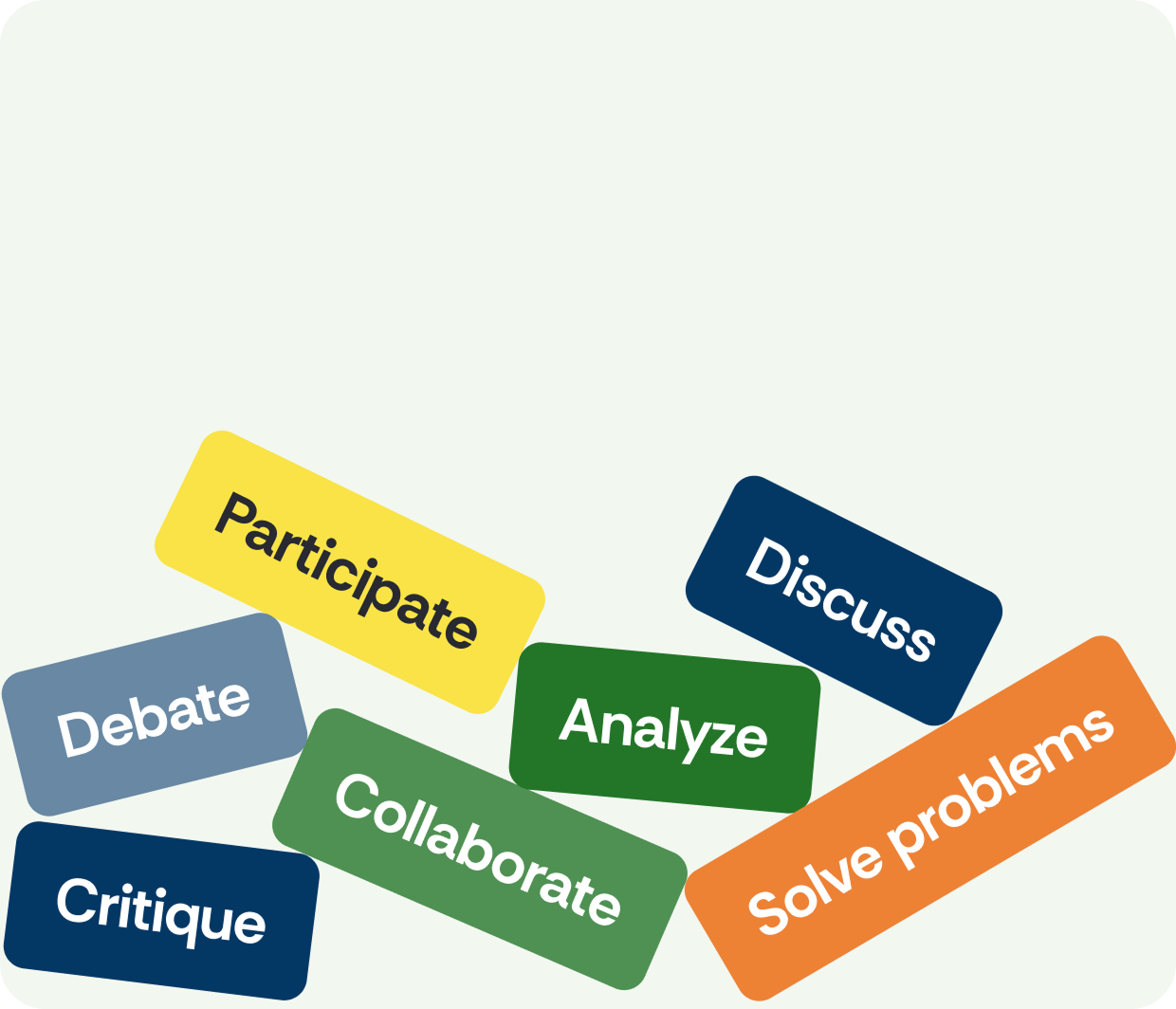Project-/Problem-Based Learning supported by FeedbackFruits
Empower your students to gain deeper understanding of the subject and develop transferable skills that they can apply beyond the classroom.

What is project-/problem-based learning?
Problem-/project-based learning (PBL) is a student-centered approach in which learners gain knowledge by working for an extended period to investigate and respond to authentic, complex questions or problems. Rather than simply receiving information, students actively explore real-world challenges, collaborate with peers, and iterate on their solutions. This experiential process fosters deeper understanding, critical thinking, and transferable skills that students can apply beyond the classroom.

Why PBL?
PBL has been proven to increase student motivation, engagement, and retention by placing them at the center of the learning process. In solving real-world problems, students develop essential 21st-century skills such as collaboration, communication, and creative thinking. PBL also encourages a deeper mastery of subject matter as students must connect theory to practice, building self-directed learning habits that last a lifetime. Particularly for adult learners, PBL supports the principles of andragogy through a problem-driven rather than a content-driven approach, helping learners establish connections between the classroom and their own goals.
Book a demoSignificant gains in test scores
PBL-based instruction has the potential to outperform traditional methods on standardized tests, illustrating a clear quantitative advantage.

Mergendoller, 2006
The Effectiveness of Problem-Based Instruction: A Comparative Study of Instructional Methods and Student Characteristics
Effect size up 0.46
Uncover moderate-to-strong gains in long-term retention through a PBL approach, surpassing lecture-based approaches.

Strobel & Barneveld, 2009
The Effectiveness of Problem-Based Instruction: A Comparative Study of Instructional Methods and Student Characteristics
20-30% higher achievements
Classrooms featuring inquiry-based and cooperative learning often see greater success on complex tasks, underscoring deeper collaboration and problem-solving.

Barron & Darling-Hammond, 2008
Teaching for Meaningful Learning: A Review of Research on Inquiry-Based and Cooperative Learning

How does FeedbackFruits support PBL?
Implementing PBL with FeedbackFruits is straightforward: create authentic problem statements, allow students to collaborate in groups, and facilitate peer and instructor feedback seamlessly—all within your LMS.
Learning activities like Peer Review enable structured feedback on project deliverables, while Interactive Video or
Interactive Document can guide students through complex tasks and resources.
With advanced features such as discussion prompts, rubrics, and group work monitoring, educators can easily track progress and ensure each learner remains actively engaged. This holistic setup reduces administrative overhead, letting instructors focus on mentoring and guiding deeper learning.
Learning activities like Peer Review enable structured feedback on project deliverables, while Interactive Video or
Interactive Document can guide students through complex tasks and resources.
With advanced features such as discussion prompts, rubrics, and group work monitoring, educators can easily track progress and ensure each learner remains actively engaged. This holistic setup reduces administrative overhead, letting instructors focus on mentoring and guiding deeper learning.
Get started with PBL using our pre-made learning templates
These templates—designed by experienced educators—offer proven structures for implementing PBL. Simply select a template, customize it, and launch engaging activities in minutes.
Browse all templatesProblem-based learning, directly within your LMS
FeedbackFruits integrates seamlessly with your Learning Management System, making it simple to incorporate PBL activities into your existing courses. Whether you teach online, hybrid, or face-to-face, FeedbackFruits ensures that activating student participation is just a few clicks away—no additional overhead, no steep learning curve.





Explore our free resources about PBL

Authentic assessment rubrics in higher education
This ebook compiles rubrics, created by educators worldwide, that can be used in PBL activities
Read more
Develop lifelong skills at TAMU Health
This use case shares how instructors at TAMU Health stimulated problem-solving and lifelong skills with authentic group projects.
Read more
Project-based learning in hybrid course at Utrecht University
Using Group Member Evaluation, Dr. Frits Flesch facilitated an effective and transparent group evaluation process in his PBL course.
Read moreSee what FeedbackFruits learning activities can be used to support project-/problem-based learning
Problem-based learning is hard. FeedbackFruits makes
it easier.
Unlock the full potential of PBL and more with the Learning Design System.
Explore the Learning Design System










